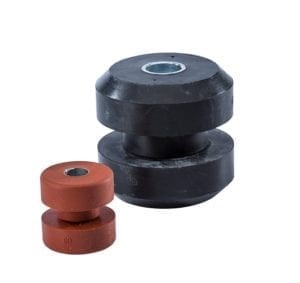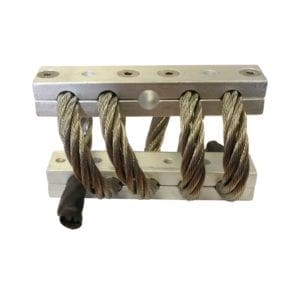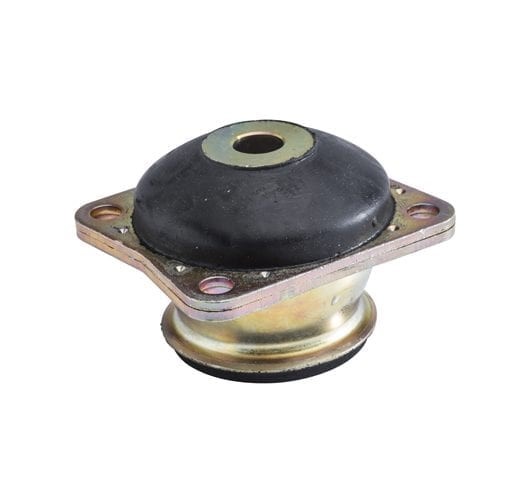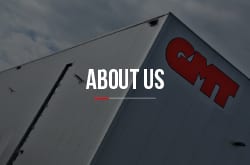Step by Step Guide to Choosing Anti-Vibration Mounts
As a leading specialist in rubber vibration mounts, we offer our extensive expertise using a step by step guide to help you choose the correct rubber mounts. Read on to read our easy to follow guide to choosing the best anti-vibration mount to suit you.
What are Anti Vibration Mounts?
Anti-vibration mounts are fastened to machines to eliminate vibration and noise. Machinery vibration from equipment can be transferred to the supporting structure and travel large distances to be emitted as noise elsewhere in a building or structure. The mounts are typically made of rubber or a combination of rubber and other materials. Rubber vibration mounts are particularly effective in preventing the transfer of vibrations that machines generate.
Anti-vibration mounts have excellent shock absorption and vibration dampening properties. Pieces of equipment and machinery subjected to noise, shocks and vibrations can be extremely damaged, affecting their lifespan, efficiency and safety. An increased risk of damage can often lead to more frequent repairs and replacements, increasing costs for the company or individual. With this in mind, it’s not surprising that these mounts are so widely used, found in industries ranging from the defence sector to renewable energy and power generation.
How to Choose an Anti-Vibration Mount:
- Identify the total weight (kg) of the equipment/machinery and the number of mountings that’ll be required.
The larger the total weight, the larger the mountings or, the higher the number of mountings needed to reduce the machine vibrations.
- Calculate the weight of each mounting. Make sure to consider that the weight on the machinery may not be evenly distributed.
For example, if the machinery weighs 340 kg, the equipment would require rubber mounts with a weight of 85 kg each if four mounts were purchased to distribute the weight evenly. Check the centre of gravity to ensure an even distribution of load as different mounts may be required in different locations.
- Measure the running speed of the machinery.
Calculate the normal running speed of the machinery, referred to as the forcing frequency and also the lowest operating speed (normally at idle).
- Determine the static deflection of the mounting.
Static deflection is simply the amount that a vibration dampening mount compresses under the weight of the equipment. The more static deflection, the more work the mount has to do. For example, if a spring is 10 cm high when unloaded and compresses to 9 cm when carrying the weight of the equipment, the static deflection is 1 cm. This is how static deflection is calculated.
- Based on the load per mounting, select a suitable mounting type to give the required static deflection.
Take into account specific application requirements and the reduction in vibration required. Graphs showing vibration isolation against deflection can be used to determine the levels of vibration reduction – please contact us for guidance or further details.
- Ensure all connections and services to equipment, like the exhausts, pipework and ducting are flexible for the machinery to move freely.
Rubber vibration isolation mounts have several benefits and offer great overall value for money. They not only serve to protect the machinery by reducing the impact of machines power but also benefit the life of equipment, vehicles and structures. Without rubber vibration mounts on the machinery, the sheer impact of the vibrations can cause weakening and even result in failure. It is, therefore, crucial to protect not only your equipment but also the well-being of the workers using the machinery with suitable mountings. Vibration damping mounts are easy to install and are available in a variety of sizes, designs and load capabilities.
Types of Anti-Vibration Mounts
By utilising the correct type of mount, you can increase the lifespan of machinery whilst reducing the adverse effects of vibration, noise and shock. GMT design, manufacture and supply a wide variety of specialised mounts, offering both stock and custom solutions for a multitude of industrial applications:
- Vibration Isolators
 Our range of isolators work to reduce any noise transmitted outwards from the machine (active). Isolators can also reduce the number of vibrations travelling to the machine from an external source such as its foundations (passive).
Our range of isolators work to reduce any noise transmitted outwards from the machine (active). Isolators can also reduce the number of vibrations travelling to the machine from an external source such as its foundations (passive).
Vibration isolators have many applications, such as in machinery for the food and pharmaceutical industries. Specific examples of use include heating and ventilation equipment, fans and power generators.
- Rubber Vibration Mounts

Unlike vibration isolators, rubber mountings can provide vibration and shock protection in three separate directions. They also provide high levels of resistance to grease and oil, making them a popular choice in both the automotive and marine industry. Rubber vibration mounts are often found in both engines and generators.
- Wire Rope Mounts

Corrosion-resistant and completely manufactured from stainless steel, our specialist selection of wire rope mounts are designed to withstand the toughest environments. They isolate shock and vibrations from all directions and offer a maintenance-free solution to the most demanding tasks.
This resilience makes our range of wire rope mounts ideal for military use, certified to standards MIL-STD-167 for vibration, MIL-STD-810 for environmental conditions and MIL-S-901 for shock. They can be found in rough terrain vehicles, aircraft and vehicle carriers.
- Conical Mounts

Conical mounts are also referred to as rubber cone mounts. With the correct washers, these mounts are suited to both compression and shear loadings. Featuring a failsafe capacity and a high load capacity, they are designed to suit mobile applications for the automotive, commercial vehicle and marine industries.
- Machine Feet

Machine feet work to reduce vibrations whilst dampening shock loads. With the option of rebound control and a variety of rubber hardness options to suit each application, it isn’t difficult to see why machine feet are used so extensively in industries such as renewable energy, power generation and agriculture and forestry. Common applications include marine mountings, engine mountings and generator mountings.
As a leading specialist in rubber vibration mounts, we have a number of trusted advisers who can help you with finding the best vibration isolation mounts to suit your requirements. If you do need further guidance regarding any of our specialist anti-vibration mountings or to enquire about our bespoke service, please don’t hesitate to get in touch today.










